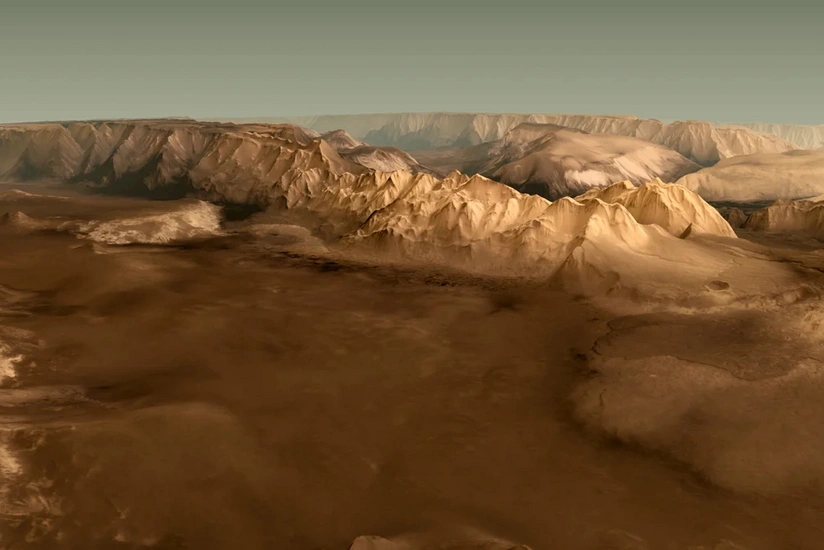Heat and dust help evaporate Martian water into space, scientists say
- 16 November, 2020
- 08:52

Scientists using an instrument aboard NASA’s Mars Atmosphere and Volatile Evolution, or MAVEN, spacecraft have discovered that water vapor near the surface of the Red Planet is lofted higher into the atmosphere than anyone expected was possible. There, it is easily destroyed by electrically charged gas particles — or ions — and lost to space.
Researchers said that the phenomenon they uncovered is one of several that has led Mars to lose the equivalent of a global ocean of water up to hundreds of feet (or up to hundreds of meters) deep over billions of years. Reporting on their finding on Nov. 13 in the journal Science, researchers said that Mars continues to lose water today as vapor is transported to high altitudes after sublimating from the frozen polar caps during warmer seasons.
“We were all surprised to find water so high in the atmosphere,” said Shane W. Stone, a doctoral student in Planetary Science at the University of Arizona’s Lunar and Planetary Laboratory in Tucson. “The measurements we used could have only come from MAVEN as it soars through the atmosphere of Mars, high above the planet’s surface.”
To make their discovery, Stone and his colleagues relied on data from MAVEN’s Neutral Gas and Ion Mass Spectrometer (NGIMS), which was developed at NASA’s Goddard Space Flight Center in Greenbelt, Maryland. The mass spectrometer inhales air and separates the ions that comprise it by their mass, which is how scientists identify them.
Stone and his team tracked the abundance of water ions high over Mars for more than two Martian years. In doing so, they determined that the amount of water vapor near the top of the atmosphere at about 93 miles, or 150 kilometers, above the surface, is highest during summer in the southern hemisphere. During this time, the planet is closest to the Sun and thus warmer, and dust storms are more likely to happen.
